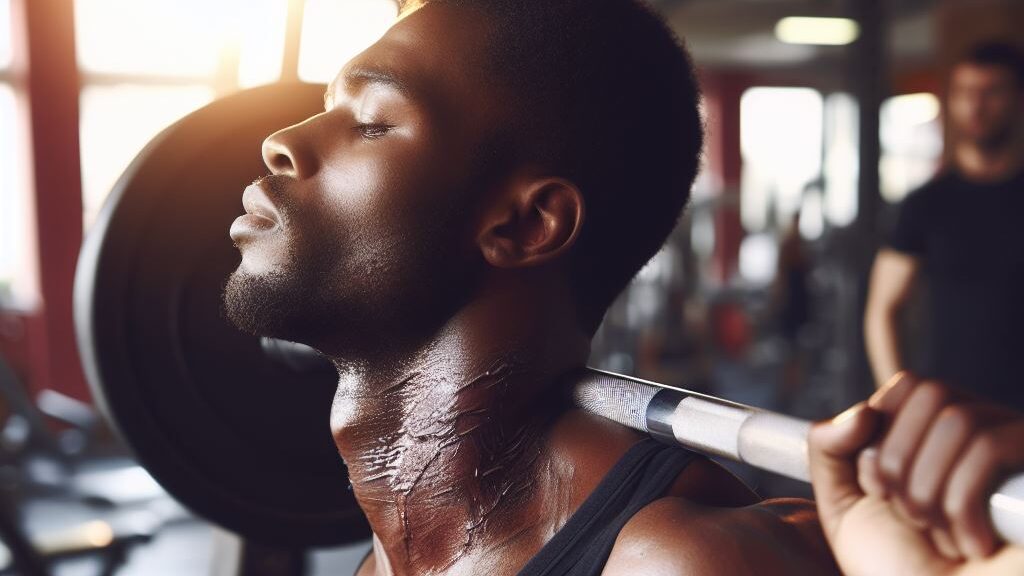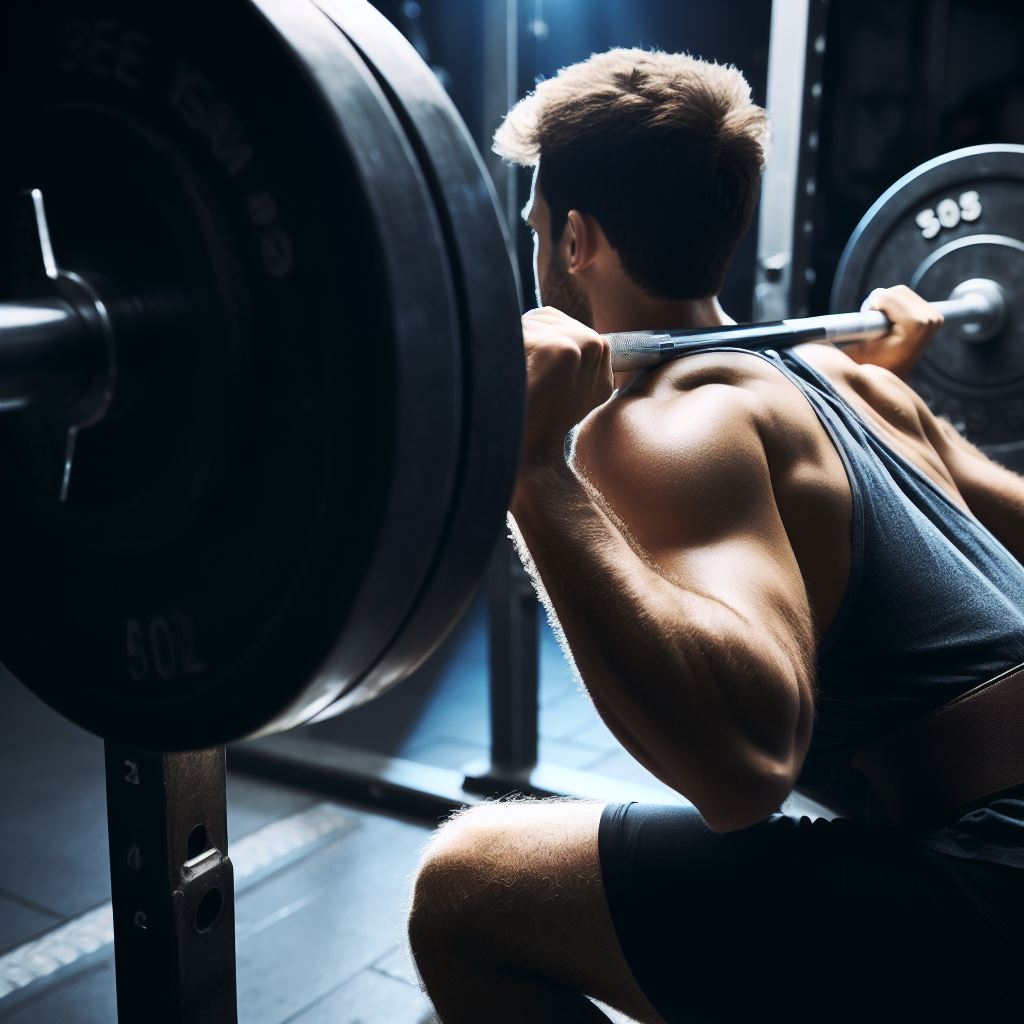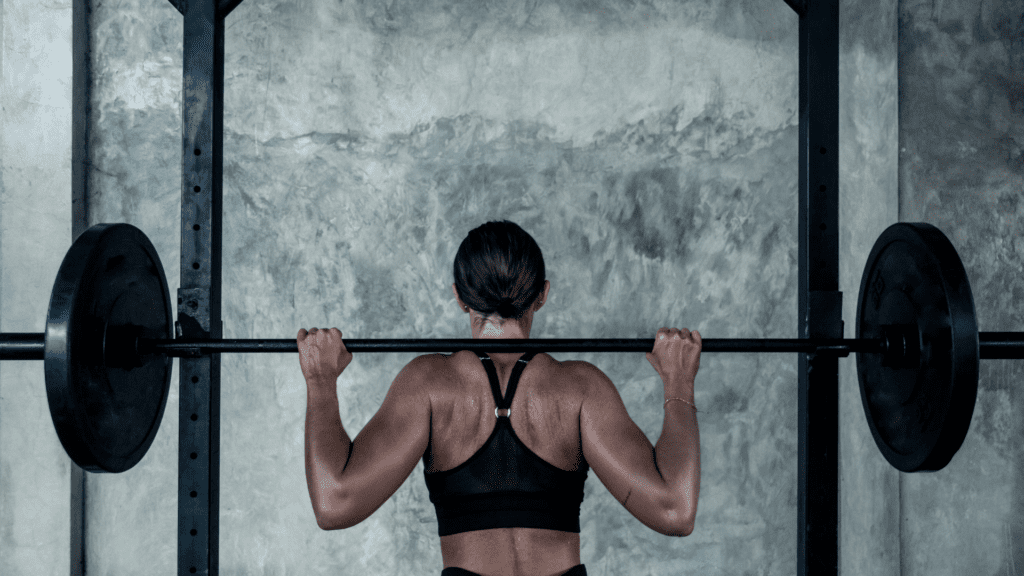As a lifter, there’s nothing quite like the satisfaction of successfully completing a challenging squat.
However, it can be frustrating when that accomplishment is overshadowed by a painful neck bruise or shoulder soreness.
The age-old question arises: “How do I stop my squat bar from bruising my shoulders and neck?”
If you’ve ever asked yourself this question, you’re in the right place.
In this guide, we delve into understanding the root causes of squat bar bruises, common mistakes that lead to them, and techniques to prevent them.
Let’s get started!
Table Of Contents
Understanding the Cause of Bruising
Bruising from squats, especially around the neck and shoulder regions, can be a common yet concerning experience for many.

At the intersection of the heavy weight of the barbell and the delicate anatomy of the neck and shoulders, it’s crucial to understand how and why these bruises occur.
By delving into the anatomy and mechanics of squatting, we can better identify the root causes, ensuring a safer and more comfortable squatting experience.
Anatomy Of The Neck And Shoulders
The neck and shoulders are a complex network of muscles, tendons, and bones.
When you place a heavy barbell on this area, especially near the base of your neck, it exerts pressure.
If the weight isn’t distributed evenly or positioned correctly, it can cause neck pain and leave bruises.
How Incorrect Bar Placement Can Lead To Bruising
A common mistake is resting the bar too high on your neck.
This not only puts undue pressure on the vertebra and spine, leading to a potential neck bruise, but it also compromises the safety and efficacy of the squat.
Proper bar placement is vital to ensure the weight is borne by the strong muscles of the upper back and not pressing down on delicate areas.
Common Mistakes Leading to Bruising
While the squat is a foundational movement in strength training, it’s also intricate, leaving room for errors.

As many embark on their squat journey, some missteps can directly lead to bruising, particularly around the vulnerable neck and shoulder area.
Recognizing and rectifying these errors is crucial, not just for avoiding unsightly bruises but for overall squat efficiency and safety.
Placing The Bar Too High Up On The Back
When the bar is too high on your neck, it can cause neck pain and increase the risk of bruising.
The bar should rest a few inches lower, on the meaty part of the traps, ensuring it’s not pressing directly on the spine.
Not Creating A Shelf With Your Traps & Rear Delts
It’s essential to engage the rear delts and traps to create a “shelf” for the barbell. This shelf provides cushioning and reduces the direct impact of the bar on the bones and soft tissues.
Not Actively Keeping The Back Tight
When squatting, always keep the back muscles engaged and tight.
Retracting your shoulder blades and driving the elbows down will not only provide a stable base for the bar but also reduce the chances of getting neck bruises.
Tips for Proper Bar Placement
Mastering the art of squatting goes beyond just lifting the weight; it’s about precision in every element, especially bar placement.
The bar’s position on your back can make the difference between a productive workout and potential injury or discomfort.

Proper placement ensures that the weight is supported by the stronger muscles, offering stability and reducing undue pressure on the spine and surrounding areas.
Let’s delve into where and how to position the bar for optimal squat performance.
The Difference Between High Bar And Low Bar Squatting
In a high bar squat, the bar rests closer to the base of your neck, on the upper traps.
On the other hand, in a low bar squat, the bar is positioned a bit lower, resting on the rear delts.
Knowing the difference and ensuring the correct position can significantly reduce the risk of bruising your neck.
How To Create A Muscle Shelf
Engage your traps by pulling your shoulder blades together. This action lifts the muscles, creating a cushion for the barbell.
Always remember to maintain this engagement throughout the lift.
Importance Of Retracting The Scapula And Positioning The Bar On The Traps
Retracting the scapula (pulling the shoulder blades together) ensures the bar is in the right position. It also provides the necessary padding, preventing the bar from digging into the spine and causing bruises.
Additional Techniques to Prevent Bruising
As one progresses in building a stronger squat, the continuous challenge is not just about lifting heavier but also ensuring that each squat session doesn’t leave a mark—literally.

Beyond the foundational practices of correct form and bar placement, there are additional techniques that can be employed to minimize the risk of bruising.
Whether it’s fortifying the muscles that cushion the bar’s weight or considering equipment adaptations, these methods can be a boon for those keen on a bruise-free squat experience.
Building Up The Traps
Strong traps play a pivotal role in providing cushioning for the squat bar.
Exercises like kelso shrugs, rear delt flies and any rowing movements can help build up these muscles, offering better protection and reducing the risk of bruises.
Using A Bar Pad For Added Cushioning
For those who don’t have a lot of muscle mass on their upper back or are still working on building it up, a bar pad can be a game-changer.
This foam cushion wraps around the barbell, providing an additional layer of padding between the bar and your skin.
While it can be helpful, remember that a bar pad might mask underlying form issues, so it’s essential to continue working on proper technique.
Considering Different Squat Techniques
If you’re experiencing neck pain or bruising even after trying the above techniques, it might be time to consider other squat variations.
Front squats, safety bar squats, or low bar squats can change the bar’s position, potentially alleviating the issue.
Frequently Asked Questions
Conclusion
In conclusion, preventing bruises from squatting boils down to understanding the anatomy, correct bar placement, and building up the necessary muscles.
As you continue on your fitness journey, always prioritize safety and comfort.
After all, the goal is to strengthen your body, not injure it.
Until next time,
-Dante